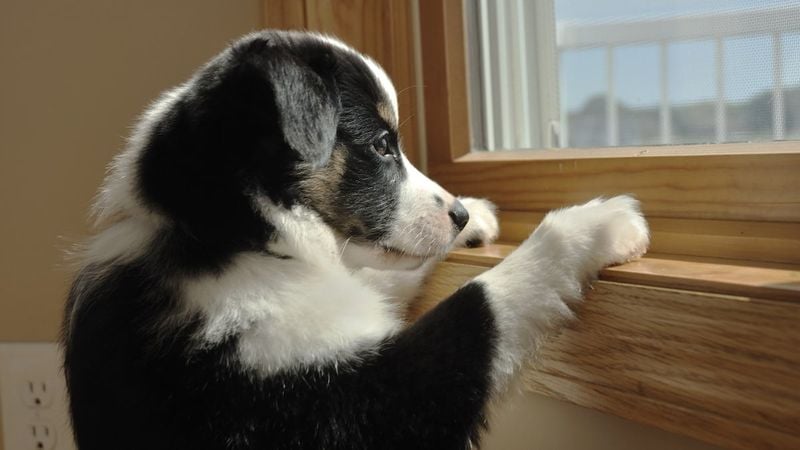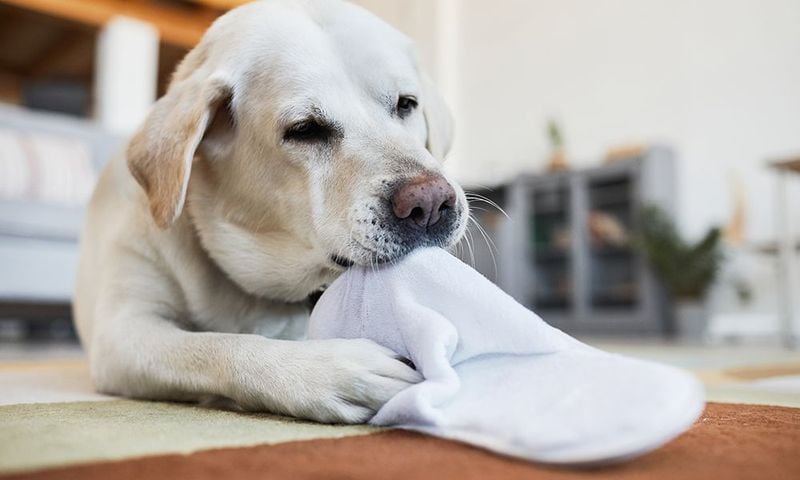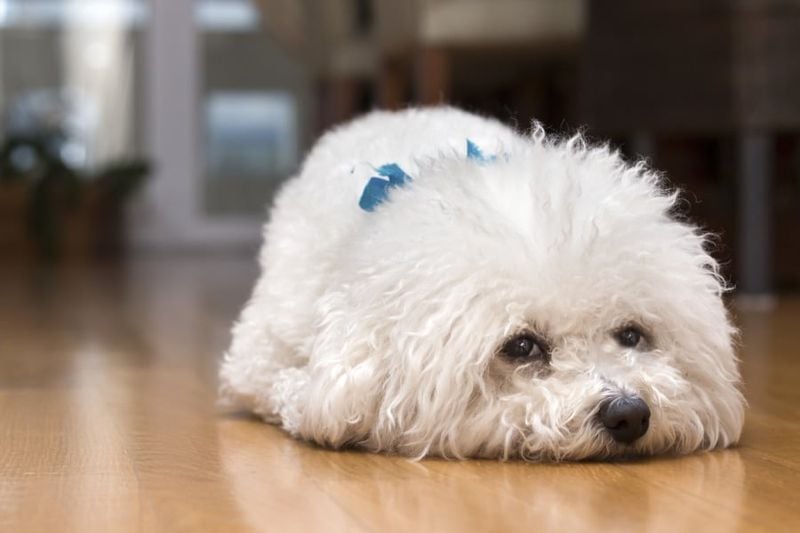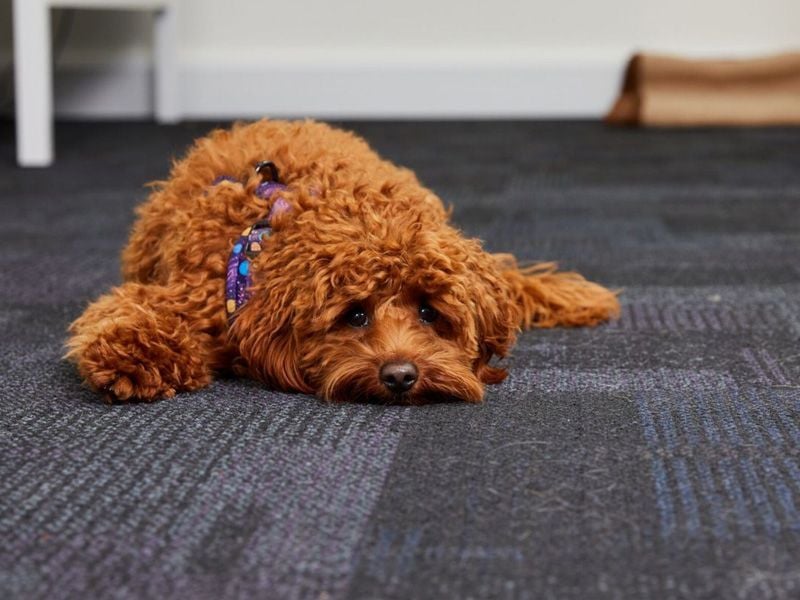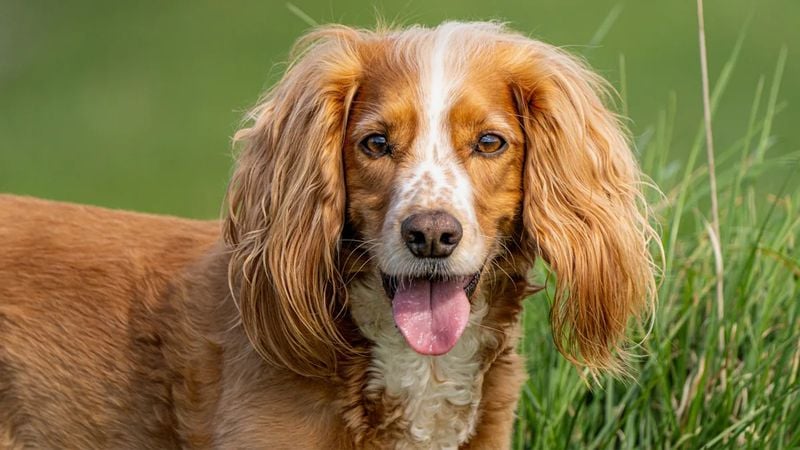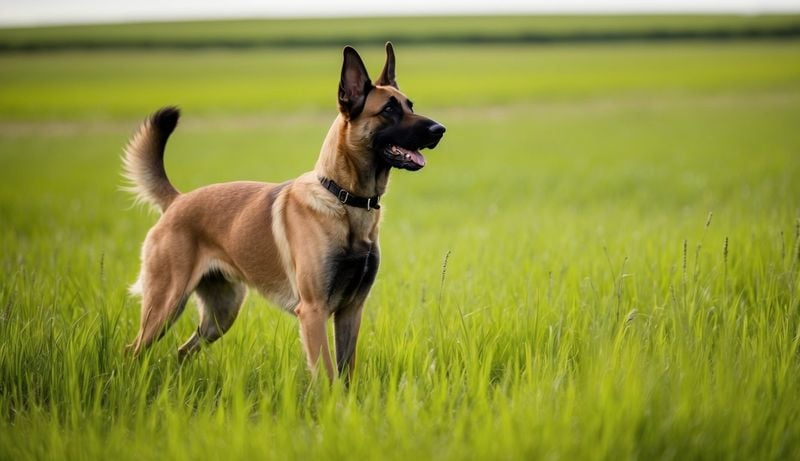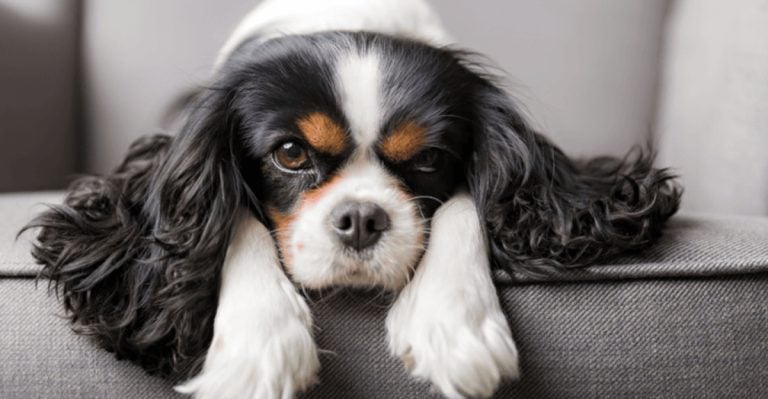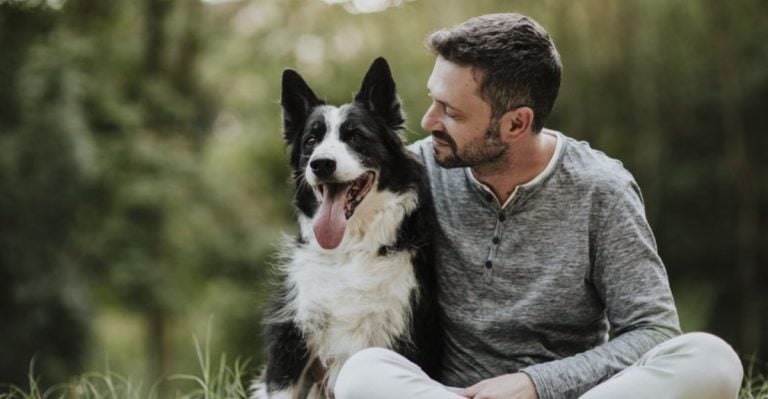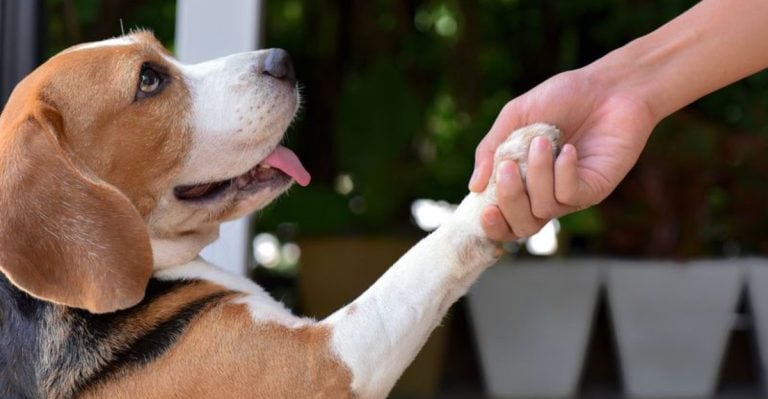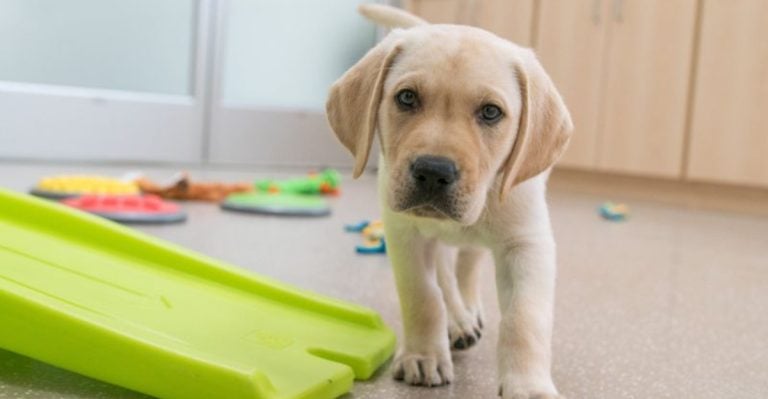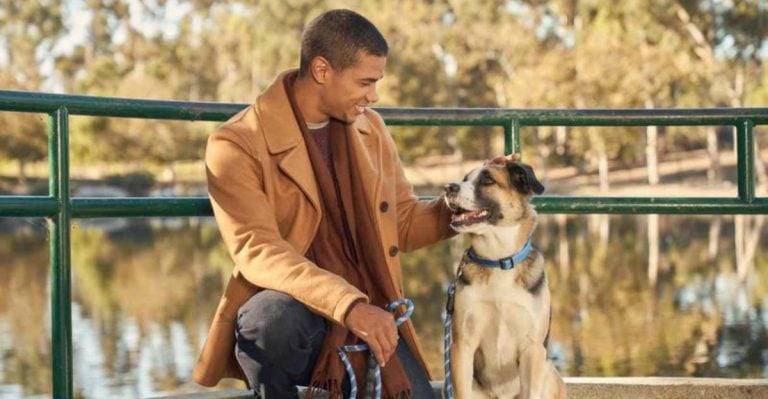13 Adorable Dogs With Big Separation Issues
Dogs are known for their loyalty and attachment to their humans, but some breeds take this bond to a whole new level. When left alone, these furry friends can experience serious anxiety that manifests in behaviors like destructive chewing, excessive barking, or even attempts to escape.
While their clinginess comes from a place of love, it’s important for owners to understand and address these separation issues to keep both their homes and pets happy.
1. Border Collie: The Workaholic Worrier
Border Collies thrive on constant mental stimulation and having a job to do. When left alone, these brilliant herders often become anxious because their active minds need engagement.
Many Border Collie owners return home to find furniture chewed, carpets dug up, or toys systematically destroyed—not out of spite, but from genuine distress and boredom. Their intelligence makes them particularly aware of routine changes.
Fun fact: Border Collies can recognize hundreds of words and will often listen attentively when you explain you’re leaving, even if they don’t like what they hear!
2. Labrador Retriever: The Velcro Companion
Labs form incredibly strong bonds with their families and genuinely believe they should be involved in every aspect of your life. Their separation anxiety often manifests as destructive chewing—particularly targeting items with your scent.
These lovable goofballs might empty trash cans, raid countertops, or howl mournfully when feeling abandoned. Despite their reputation for being easy-going, Labs can become surprisingly distressed when their pack disperses.
A tired Lab is a happy Lab, so lengthy exercise before departure can significantly reduce their anxiety while you’re gone.
3. German Shepherd: The Protective Panicker
German Shepherds take their role as family protectors seriously—so seriously that being separated from their charges causes genuine distress. Their anxiety often manifests as pacing, whining, and excessive shedding.
These loyal guardians may position themselves at windows or doors, vigilantly awaiting your return while working themselves into a state of worry. Some shepherds develop almost ritualistic behaviors, checking each room repeatedly as if searching for missing family members.
Despite their tough exterior, these sensitive souls need gradual training to understand that your absence is temporary, not a cause for alarm.
4. Bichon Frise: The Powder Puff Panic-er
Don’t let their fluffy, cheerful appearance fool you—Bichons develop intense attachments to their humans. These little clouds of white fur were bred specifically for companionship, making solitude particularly challenging for them.
When left alone, Bichons may bark incessantly, causing neighborhood complaints. Their small size doesn’t limit their vocal power! Some develop stress-related behaviors like excessive licking, creating unsightly stains on their pristine coats.
Bichons respond well to crate training when done properly, viewing their special space as a comforting den rather than confinement.
5. Vizsla: The Velvet Shadow
Hungarian Vizslas are famously nicknamed “velcro dogs” for good reason. These rust-colored beauties physically cannot bear to be separated from their chosen person, often following them from room to room even within the home.
When left alone, Vizslas may scratch frantically at doors or windows, sometimes injuring themselves in desperate attempts to reunite with their person. Their thin coats offer little protection during these episodes. Vizslas have been known to develop such severe anxiety that they refuse food when their owner is absent.
These sensitive souls benefit greatly from having another canine companion to ease their loneliness.
6. Cavalier King Charles Spaniel: The Royal Worrier
Cavaliers were bred specifically to be lap dogs for royalty, and they take this historical role very seriously. These gentle souls become genuinely distressed when separated from their beloved owners, often displaying trembling or hiding behaviors.
Their soulful eyes become even more sorrowful when experiencing separation anxiety. Many Cavaliers will gather their owner’s clothing or shoes, creating nests of scented items for comfort during absences.
Unlike some breeds that become destructive, Cavaliers typically internalize their anxiety, sometimes refusing food or water until their person returns—a concerning response that owners must monitor carefully.
7. Toy Poodle: The Brilliant Basket Case
Toy Poodles combine remarkable intelligence with intense sensitivity, creating the perfect storm for separation issues. These miniature geniuses quickly figure out your departure cues—grabbing keys, putting on shoes—and may begin showing anxiety before you’ve even left.
Their distress often manifests as excessive barking that shifts in tone and pitch, almost like they’re having a conversation about their abandonment. Some Toy Poodles become so distressed they develop stress-related digestive issues or refuse to eat.
Despite their tiny size, they possess big emotions and benefit greatly from puzzle toys that engage their impressive brains during alone time.
8. Italian Greyhound: The Delicate Diva
Italian Greyhounds elevate clinginess to an art form. These delicate, shivering pups are notorious for their dramatic reactions to being left alone. Their slender bodies seem to vibrate with anxiety when separation looms.
Many owners discover that their IGs refuse to go outside in bad weather without company but will suddenly brave the elements to search for their missing human. These sensitive sighthounds often refuse to eat or drink when stressed, making their separation anxiety particularly concerning.
Their thin skin and minimal body fat mean they seek warmth constantly—usually against their human’s body—making alone time genuinely uncomfortable for them.
9. Australian Shepherd: The Herding Heartbreaker
Aussies were bred to keep track of entire flocks, and they apply this same dedication to monitoring their human family members. When part of their “flock” goes missing, these herding dogs experience genuine distress.
Their anxiety often takes the form of destructive behaviors targeting door frames or window sills—the barriers between them and their missing person. Many Aussies will attempt to herd remaining family members into one room during times of separation, as if keeping everyone together will somehow make the absent person reappear.
Their intelligence makes them master escape artists when motivated by separation distress.
10. Chihuahua: The Tiny Terror
Don’t let their small size fool you—Chihuahuas form attachments of gigantic proportions. These pocket-sized pups often bond primarily with one person, developing almost obsessive attachments that make separation extremely difficult.
When left alone, Chihuahuas may express their distress through high-pitched barking that can continue for hours. Many become so anxious they tremble visibly or hide in small, secure spaces. Their tiny bladders coupled with emotional distress often leads to accidents, even in well-trained individuals.
Surprisingly, many Chihuahuas find comfort in burrowing into laundry or bedding with their owner’s scent during separations.
11. Shetland Sheepdog: The Sensitive Sentinel
Shelties combine the separation issues of herding breeds with an exceptionally sensitive nature. These beautiful dogs develop elaborate monitoring routines, checking on family members regularly throughout the day.
When their routine is disrupted by your absence, Shelties often resort to excessive barking—their way of trying to call their missing flock members home. Their vocalizations can become so persistent that neighbors may complain. Shelties are known to become particularly distressed by changes in household schedule.
These perceptive pups can detect even subtle pre-departure cues, becoming anxious long before you actually leave the house.
12. Cocker Spaniel: The Devoted Desponder
Those soulful Cocker Spaniel eyes become even more expressive when experiencing separation anxiety. These affectionate companions form deep bonds with their families and genuinely mourn their absence, even for short periods.
Many Cockers respond to separation with excessive drooling or nervous licking that can create hot spots on their beautiful coats. Their distress often manifests as chewing behaviors targeting personal items with their owner’s scent—shoes, remote controls, and cell phone cases are common victims.
Cocker Spaniels are particularly prone to stress-related ear infections due to increased wax production during anxiety episodes, requiring special attention from owners.
13. Belgian Malinois: The Working Worrier
Belgian Malinois are elite working dogs with extreme drive and focus—qualities that make them exceptional at jobs but challenging as pets when left alone. These intense shepherds form powerful bonds with their handlers that can transform into severe anxiety when separated.
Their distress often takes destructive forms, with many Malinois capable of demolishing drywall, furniture, or doors in their panic. Their athletic abilities mean they can easily jump fences or break through windows when motivated by separation distress.
Unlike some anxious breeds, Malinois rarely settle into their anxiety—instead, their distress often escalates throughout the duration of separation.

